Martin Cosby's Blog, page 5
February 16, 2014
Review: In a Season of Dead Weather, by Mark Fuller Dillon
In a Season of Dead Weather
is a collection of seven short stories by Canadian author Mark Fuller Dillon. It consists of an authentically strange world of the author's own design, into which the reader is cast adrift; duly I found myself lost, and happily so.
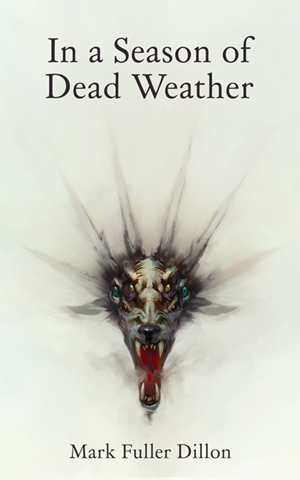
This reader willingly joined the protagonist of Lamia Dance, the book's opening tale, by stepping out of the wind into the 'grimy, dark-paneled lobby of the cinema', and was captured straight away. In this powerfully poetic piece, an introverted youth attempts to socialise by viewing what turns out to be an obscure and erotic film with his fellow students, but is so disturbed by the experience that his isolation is thrown into even starker relief. As his past unravels itself on the screen before his eyes, he can take no more, and leaves before the main feature; but is his departure from the cinema too early, or too late? The tone is set.
Next is Never Noticed, Never There which deals with people's misguided perception of reality. Disappearance follows disappearance, then graphic designer Tom Lighden begins to see ghosts everywhere; his search for the missing Robert Piedmont leads him to an alternative world, partly within the very substance of things. The world reclaims him, but it keeps on turning regardless, and sure enough, no one notices.
Winter's approach looms large over Shadows in the Sunrise, which is set shortly into the future, after some kind of economic or social meltdown. Most have left the farmland for the apparent safety of walled cities, leaving our protagonist as some kind of caretaker, abandoned and alone, fearing the onset of the season's harsh weather. He visits a farmhouse full of recollections from his youth; but are those memories authentic, or do the shadows on the wall and the lights in the sky exist only in his mind? We begin to question the validity of his viewpoint as his isolation becomes ever more complete.
When the Echo Hates the Voice is the intriguing tale of Marcel Dumont, an obstetrician who makes his very first (and successful) delivery, then abruptly experiences a frightening hallucination. The resulting child, Paul Bertrand, grows up to be a popular, yet highly strung youth: convinced he is being somehow persecuted. He seems to have every advantage in life, but is there a side of him which is determined to destroy it all, through an insanely jealous rage?
In What Would Remain? Colleen is a political activist, recently released from jail, who struggles to contact her mother at her isolated home. Eventually, and with the prospect of worsening weather, she drives out to investigate; she finds a desolate landscape in the grip of a blizzard, inhabited only by ghosts. Having found her mother at last, she struggles to prevent her from joining the constant flow of people trudging past her house, to the north and to their certain doom in the snowy landscape. The question is posed: if the world was purged of humanity, what would remain?
Mikhail remembers the 'tall blind houses near the canal' in The Weight of its Awareness, perhaps my favourite story of this collection. Now middle-aged, the possibilities of youth long gone, he is determined to capture even a fleeting glance of what might have been; so he sets out on a journey one morning to find those houses once more. However, his unreliable memory is unable to prepare him either for what he finds or for what he has unwittingly become.
Finally, The Vast Impatience of the Night introduces us to the numerous widows of a small rural community. Janet Richardson makes her way home one evening after yet another bereavement, and encounters a barricade of cloud, ghostly figures, and a bizarre light show. In her quest for safety, and to 'look after her girls', does she stumble upon all that remains of the widowers themselves? The thought of history repeating itself is almost too much for her to bear.
There are themes of love and loss, misunderstanding, and a diminishing sense of identity throughout this collection which link the stories strongly. The bleak landscape clearly inspires the author, and his descriptive prose of rural communities in the grip of a Canadian winter will have you shivering; yet despite this there is a warmth of experience here which brings the characters to life, proving the author not only writes beautifully, but also has a lot to say.
I was entranced by this book, and I read it in one sitting. These are powerful yet subtle three-dimensional tales from an original mind, and Mark Fuller Dillon deserves a greater readership; which I'm sure will come his way soon.

This reader willingly joined the protagonist of Lamia Dance, the book's opening tale, by stepping out of the wind into the 'grimy, dark-paneled lobby of the cinema', and was captured straight away. In this powerfully poetic piece, an introverted youth attempts to socialise by viewing what turns out to be an obscure and erotic film with his fellow students, but is so disturbed by the experience that his isolation is thrown into even starker relief. As his past unravels itself on the screen before his eyes, he can take no more, and leaves before the main feature; but is his departure from the cinema too early, or too late? The tone is set.
Next is Never Noticed, Never There which deals with people's misguided perception of reality. Disappearance follows disappearance, then graphic designer Tom Lighden begins to see ghosts everywhere; his search for the missing Robert Piedmont leads him to an alternative world, partly within the very substance of things. The world reclaims him, but it keeps on turning regardless, and sure enough, no one notices.
Winter's approach looms large over Shadows in the Sunrise, which is set shortly into the future, after some kind of economic or social meltdown. Most have left the farmland for the apparent safety of walled cities, leaving our protagonist as some kind of caretaker, abandoned and alone, fearing the onset of the season's harsh weather. He visits a farmhouse full of recollections from his youth; but are those memories authentic, or do the shadows on the wall and the lights in the sky exist only in his mind? We begin to question the validity of his viewpoint as his isolation becomes ever more complete.
When the Echo Hates the Voice is the intriguing tale of Marcel Dumont, an obstetrician who makes his very first (and successful) delivery, then abruptly experiences a frightening hallucination. The resulting child, Paul Bertrand, grows up to be a popular, yet highly strung youth: convinced he is being somehow persecuted. He seems to have every advantage in life, but is there a side of him which is determined to destroy it all, through an insanely jealous rage?
In What Would Remain? Colleen is a political activist, recently released from jail, who struggles to contact her mother at her isolated home. Eventually, and with the prospect of worsening weather, she drives out to investigate; she finds a desolate landscape in the grip of a blizzard, inhabited only by ghosts. Having found her mother at last, she struggles to prevent her from joining the constant flow of people trudging past her house, to the north and to their certain doom in the snowy landscape. The question is posed: if the world was purged of humanity, what would remain?
Mikhail remembers the 'tall blind houses near the canal' in The Weight of its Awareness, perhaps my favourite story of this collection. Now middle-aged, the possibilities of youth long gone, he is determined to capture even a fleeting glance of what might have been; so he sets out on a journey one morning to find those houses once more. However, his unreliable memory is unable to prepare him either for what he finds or for what he has unwittingly become.
Finally, The Vast Impatience of the Night introduces us to the numerous widows of a small rural community. Janet Richardson makes her way home one evening after yet another bereavement, and encounters a barricade of cloud, ghostly figures, and a bizarre light show. In her quest for safety, and to 'look after her girls', does she stumble upon all that remains of the widowers themselves? The thought of history repeating itself is almost too much for her to bear.
There are themes of love and loss, misunderstanding, and a diminishing sense of identity throughout this collection which link the stories strongly. The bleak landscape clearly inspires the author, and his descriptive prose of rural communities in the grip of a Canadian winter will have you shivering; yet despite this there is a warmth of experience here which brings the characters to life, proving the author not only writes beautifully, but also has a lot to say.
I was entranced by this book, and I read it in one sitting. These are powerful yet subtle three-dimensional tales from an original mind, and Mark Fuller Dillon deserves a greater readership; which I'm sure will come his way soon.
Published on February 16, 2014 19:36
February 10, 2014
Review: Marshland, by Gareth E. Rees
This book, written by Gareth E. Rees and illustrated by Ada Jusic, surprised me greatly. I was initially interested in it because, on the surface, it tells stories of and about the area around the Lea basin; and I grew up a short walk from the River Lea. I was therefore looking to reminisce, perhaps to learn a little more of the area's history.
However, Marshland, Dreams and Nightmares on the Edge of London is so much more than that.

I was not prepared for its broad scope. Part memoir, part historical document, part political commentary, part strange story collection... it works on so many levels. It even has a humorous aspect, with a very funny sequence involving social media, which made me laugh out loud. Although it's all of these things and more, Rees has pulled it all together remarkably well, and it is a thoroughly satisfying read.
Our protagonist wanders the Hackney marshes and the banks of the River Lea with his dog Hendrix. He reflects upon his life, the geography of the area, its history, and his own imagination. In this unique landscape he muses over the legacy of the London Olympics, the inland waterways, the disused filter beds, the fascinating story of Whipple and Hazlehurst, and much more. The reader is taken on a number of journeys where the past meets the present; and where they collide, ghosts are encountered and strangeness abounds.
These ghosts initially take the form of engineers from the Victorian era, haplessly time-travelling and way out of their depth, in The Most Peculiar Vanishing of Messrs Whipple & Hazlehurst. Rees expertly uses these characters from history to highlight the changes in the area both physically and socially. In The Ghost Factory, occupants of a trendy development built on the marshes find themselves transforming into the workers from a demolished factory. Marsh Meat sees Albie meeting a bear... but does the bear meet Albie? Of particular interest to me are the ongoing sightings of creatures in and on the banks of the Lea, as these reports formed part of my own childhood. We even visit the area as post-apocalyptic landscape in Naja's Ark, a fascinating prediction of the near-future; and in Endgames, the switch to the Gregorian calendar is pondered: 'The day Parliament stole time, things began to go wrong on the marshes.'
The illustrations work very well, even in the Kindle version which I purchased, adding another dimension to the book. Indeed, included is The Raving Dead, a stand-alone graphic tale involving zombies rising up from the Lea and haunting the marshes. What more could you want?
Marshland will make you look at your own environment in a different light. It combines fact with fiction, history with horror, temples with time travel. Rich pickings! I enjoyed the ride and I can't wait to read more from Gareth E. Rees.
However, Marshland, Dreams and Nightmares on the Edge of London is so much more than that.

I was not prepared for its broad scope. Part memoir, part historical document, part political commentary, part strange story collection... it works on so many levels. It even has a humorous aspect, with a very funny sequence involving social media, which made me laugh out loud. Although it's all of these things and more, Rees has pulled it all together remarkably well, and it is a thoroughly satisfying read.
Our protagonist wanders the Hackney marshes and the banks of the River Lea with his dog Hendrix. He reflects upon his life, the geography of the area, its history, and his own imagination. In this unique landscape he muses over the legacy of the London Olympics, the inland waterways, the disused filter beds, the fascinating story of Whipple and Hazlehurst, and much more. The reader is taken on a number of journeys where the past meets the present; and where they collide, ghosts are encountered and strangeness abounds.
These ghosts initially take the form of engineers from the Victorian era, haplessly time-travelling and way out of their depth, in The Most Peculiar Vanishing of Messrs Whipple & Hazlehurst. Rees expertly uses these characters from history to highlight the changes in the area both physically and socially. In The Ghost Factory, occupants of a trendy development built on the marshes find themselves transforming into the workers from a demolished factory. Marsh Meat sees Albie meeting a bear... but does the bear meet Albie? Of particular interest to me are the ongoing sightings of creatures in and on the banks of the Lea, as these reports formed part of my own childhood. We even visit the area as post-apocalyptic landscape in Naja's Ark, a fascinating prediction of the near-future; and in Endgames, the switch to the Gregorian calendar is pondered: 'The day Parliament stole time, things began to go wrong on the marshes.'
The illustrations work very well, even in the Kindle version which I purchased, adding another dimension to the book. Indeed, included is The Raving Dead, a stand-alone graphic tale involving zombies rising up from the Lea and haunting the marshes. What more could you want?
Marshland will make you look at your own environment in a different light. It combines fact with fiction, history with horror, temples with time travel. Rich pickings! I enjoyed the ride and I can't wait to read more from Gareth E. Rees.
Published on February 10, 2014 17:00
January 29, 2014
Review: Little Visible Delight, by S.P. Miskowski & Kate Jonez
Obsession
1. An idea or image that repeatedly intrudes upon the mind of a person against his will and is usually distressing.
2. The action of any influence, notion, or 'fixed idea', which persistently assails or vexes, esp. so as to decompose the mind.
3. The hostile action of the devil or an evil spirit besetting any one; actuation by the devil or an evil spirit from without; the fact of being thus beset or actuated.

When I found out that Little Visible Delight, the anthology of dark fiction by S.P. Miskowski and Kate Jonez, was themed along the lines of 'obsession', I felt compelled to get out my copy of the Compact Oxford English Dictionary. Each definition seemed scarier than the one before. It was a good omen.
There's nothing quite as inviting as a collection of dark fiction, especially with every story being new to me; and every page of this publication is to be savoured, consisting of edgy, unnerving tales of subtle strangeness. Proceedings kick off with The Receiver of Tales, by Lynda E. Rucker, in which Aisha recalls her intimacy with Ruben, and of how he had been usurped by people's stories; and of how it ruined him. Has this curse been transferred to her? It seems so, as she carves precious words all over her body. Is she stronger than he, or will she take the easy way out? She embarks upon a dreamlike journey, and at its conclusion, Aisha realises she cannot live without the very obsession she railed against.
Preoccupation with the fountain of youth and the ruthless pursuit of immortality is tackled in the complex Needs Must When the Devil Drives, by Cory J. Herndon. It seems we must be careful what we wish for, and be grateful for being a long time dead! Next up Kate Jonez provides A Thousand Stitches. Laura Beatty finds herself at Malley's Dry Cleaners, a down-at-heel establishment which she hopes is a stepping-stone to the exciting life just around the corner in New York. She repairs wedding dresses with Judy, a worker who seemingly has a murky past with the firm. When conditions and pay are changed for the worse, Laura Beatty faces the fact she may never be able to achieve her dream of escape; yet a chance is given and taken both immediately and gratefully. Once she is safely in New York, however, the reader has cause to question both her motives, her methods and even her identity.
Johhny Worthen's intriguing tale The Point, set in the dark bunker of the mind, tackles death and Armageddon, leading on to Calligraphy, by James Everington. Blake rises one morning, not as a beetle, nor even to be arrested, but to find 'elegant, cursive writing' all over his face. He is, however, unable to decipher the meaning of the words. Forced to forsake his preferred seclusion in order to seek some kind of explanation, a neighbour leads him to an unfamiliar church, in what has become an unfamiliar world; in front of the congregation, the priest reads the words on his face. Does this bring enlightenment, or just the opposite? A typically compelling story by this author.
This Many, by S.P. Miskowski, explores the world of the competitive parent. Stay-at-home mother Lorrie dreams of the perfect fairy dress for her daughter Frances, and forces her to don it for her birthday party: '"Mom made it so I have to wear it," Frances said, and rolled her eyes.' During this extravaganza, an extra adult appears and causes much confusion after disappearing somewhere within the house. A search reveals nothing, but the contact between the sinister intruder and Frances has caused something to change, so that next year's party may not be looked forward to quite so enthusiastically... Miskowski deftly exposes the cracks present behind the facade of the perfect family, leaving the reader to wait for the inevitable collapse.
JP, by Brent Michael Kelley, explores a child's seemingly innocent obsession with a pet which has died; and of how a strong desire not to be separated ends in something gruesome. Deceptively simple, this story is not for the fainthearted, and is as close to conventional 'horror' as this collection gets. Black Eyes Broken, by Mercedes Yardley, is the sad tale of Natalia, who has the unfortunate knack of destroying everything she loves. Her relationships inevitably end in tragedy, and this leads to her withdrawal from the world. Worse is to come, however, as she thinks of the future.
This fine anthology is topped off by Bears: a Fairy Tale of 1958, by Steve Duffy. This is a finely-wrought take on Goldilocks and the Three Bears, documenting the Bear family's attempt to assimilate into late-1950s society, but suffering from discrimination, heartache and practical problems at every turn. Tongue-in-cheek it may be but it still packs a satisfying punch.
There is not a weak story here; and, add to this the excellent design and presentation of the Kindle version I bought, means I would recommend this wonderful collection to anyone who enjoys short stories.
1. An idea or image that repeatedly intrudes upon the mind of a person against his will and is usually distressing.
2. The action of any influence, notion, or 'fixed idea', which persistently assails or vexes, esp. so as to decompose the mind.
3. The hostile action of the devil or an evil spirit besetting any one; actuation by the devil or an evil spirit from without; the fact of being thus beset or actuated.

When I found out that Little Visible Delight, the anthology of dark fiction by S.P. Miskowski and Kate Jonez, was themed along the lines of 'obsession', I felt compelled to get out my copy of the Compact Oxford English Dictionary. Each definition seemed scarier than the one before. It was a good omen.
There's nothing quite as inviting as a collection of dark fiction, especially with every story being new to me; and every page of this publication is to be savoured, consisting of edgy, unnerving tales of subtle strangeness. Proceedings kick off with The Receiver of Tales, by Lynda E. Rucker, in which Aisha recalls her intimacy with Ruben, and of how he had been usurped by people's stories; and of how it ruined him. Has this curse been transferred to her? It seems so, as she carves precious words all over her body. Is she stronger than he, or will she take the easy way out? She embarks upon a dreamlike journey, and at its conclusion, Aisha realises she cannot live without the very obsession she railed against.
Preoccupation with the fountain of youth and the ruthless pursuit of immortality is tackled in the complex Needs Must When the Devil Drives, by Cory J. Herndon. It seems we must be careful what we wish for, and be grateful for being a long time dead! Next up Kate Jonez provides A Thousand Stitches. Laura Beatty finds herself at Malley's Dry Cleaners, a down-at-heel establishment which she hopes is a stepping-stone to the exciting life just around the corner in New York. She repairs wedding dresses with Judy, a worker who seemingly has a murky past with the firm. When conditions and pay are changed for the worse, Laura Beatty faces the fact she may never be able to achieve her dream of escape; yet a chance is given and taken both immediately and gratefully. Once she is safely in New York, however, the reader has cause to question both her motives, her methods and even her identity.
Johhny Worthen's intriguing tale The Point, set in the dark bunker of the mind, tackles death and Armageddon, leading on to Calligraphy, by James Everington. Blake rises one morning, not as a beetle, nor even to be arrested, but to find 'elegant, cursive writing' all over his face. He is, however, unable to decipher the meaning of the words. Forced to forsake his preferred seclusion in order to seek some kind of explanation, a neighbour leads him to an unfamiliar church, in what has become an unfamiliar world; in front of the congregation, the priest reads the words on his face. Does this bring enlightenment, or just the opposite? A typically compelling story by this author.
This Many, by S.P. Miskowski, explores the world of the competitive parent. Stay-at-home mother Lorrie dreams of the perfect fairy dress for her daughter Frances, and forces her to don it for her birthday party: '"Mom made it so I have to wear it," Frances said, and rolled her eyes.' During this extravaganza, an extra adult appears and causes much confusion after disappearing somewhere within the house. A search reveals nothing, but the contact between the sinister intruder and Frances has caused something to change, so that next year's party may not be looked forward to quite so enthusiastically... Miskowski deftly exposes the cracks present behind the facade of the perfect family, leaving the reader to wait for the inevitable collapse.
JP, by Brent Michael Kelley, explores a child's seemingly innocent obsession with a pet which has died; and of how a strong desire not to be separated ends in something gruesome. Deceptively simple, this story is not for the fainthearted, and is as close to conventional 'horror' as this collection gets. Black Eyes Broken, by Mercedes Yardley, is the sad tale of Natalia, who has the unfortunate knack of destroying everything she loves. Her relationships inevitably end in tragedy, and this leads to her withdrawal from the world. Worse is to come, however, as she thinks of the future.
This fine anthology is topped off by Bears: a Fairy Tale of 1958, by Steve Duffy. This is a finely-wrought take on Goldilocks and the Three Bears, documenting the Bear family's attempt to assimilate into late-1950s society, but suffering from discrimination, heartache and practical problems at every turn. Tongue-in-cheek it may be but it still packs a satisfying punch.
There is not a weak story here; and, add to this the excellent design and presentation of the Kindle version I bought, means I would recommend this wonderful collection to anyone who enjoys short stories.
Published on January 29, 2014 23:04
January 19, 2014
Dying Embers available for pre-order
I'm very pleased to announce that Dying Embers, my first collection of strange adventures, is now available for pre-order direct from Satalyte Publishing. All you have to do is send an e-mail to sales@satalyte.com.au with your request and there you go! It will give them an idea of the demand in advance of publication... and you'll be first in the queue.

“My mind had created a monster in the next terrace…”
Welcome to the world hidden behind the everyday. These stories of urban strangeness explore what goes on within the dying embers of the fire, once the heat has almost gone.
An historic building holds the key to a terrible secret from Letherby's youth. A passenger on an international flight finds out that he is not master of his own destiny – finding out who is, though, is quite another matter. Rural Australia proves less welcoming than Preston had hoped, forcing him to confront the guilt from his past. Pocock witnesses something calamitous on the river bank which changes the course of his life. The alien landscape of a network of warehouses provides the background to a remarkable transformation. An ill-fated property search leads first to admission, then to a strange form of retribution, and ultimately to a terrifying reunion.
“A fascinating and eclectic collection of strange adventures…”
James Everington, author of Falling Over.
“These are powerful, energetically written tales that are some of the finest I’ve read in the genre of dark fiction. The language is wonderfully imaginative and instantly thrusts the reader into the realms of slowly revealed decay. A must-read!”
Paul Hodge, Freaky Folk Tales
Check out the full list of books coming up from Satalyte here. Many genres are represented, so there is bound to be something for everyone. By the way, the website for Dying Embers is at martincosby.com so have a look if you like. I will let you all know as soon as I have a publication date.

“My mind had created a monster in the next terrace…”
Welcome to the world hidden behind the everyday. These stories of urban strangeness explore what goes on within the dying embers of the fire, once the heat has almost gone.
An historic building holds the key to a terrible secret from Letherby's youth. A passenger on an international flight finds out that he is not master of his own destiny – finding out who is, though, is quite another matter. Rural Australia proves less welcoming than Preston had hoped, forcing him to confront the guilt from his past. Pocock witnesses something calamitous on the river bank which changes the course of his life. The alien landscape of a network of warehouses provides the background to a remarkable transformation. An ill-fated property search leads first to admission, then to a strange form of retribution, and ultimately to a terrifying reunion.
“A fascinating and eclectic collection of strange adventures…”
James Everington, author of Falling Over.
“These are powerful, energetically written tales that are some of the finest I’ve read in the genre of dark fiction. The language is wonderfully imaginative and instantly thrusts the reader into the realms of slowly revealed decay. A must-read!”
Paul Hodge, Freaky Folk Tales
Check out the full list of books coming up from Satalyte here. Many genres are represented, so there is bound to be something for everyone. By the way, the website for Dying Embers is at martincosby.com so have a look if you like. I will let you all know as soon as I have a publication date.
Published on January 19, 2014 18:53
January 6, 2014
Farewell Elizabeth Jane Howard
I was born in Kensington. My father was a composer. My mother came from a rich home, and was, I believe, incurably romantic. She married my father, despite the half-hearted protestations of her family, who felt that to marry a musician was very nearly as bad as to marry into trade, and much less secure.
 My old copy of The Beautiful Visit (1950), Howard's first novelSo begins chapter one of The Beautiful Visit, Elizabeth Jane Howard's first novel, and the first example of her writing I had encountered; many years ago. It soon became one of my favourite novels. Enchanting, sensitive and beautifully written, it tells of a magical experience in a young girl's life, the mood of which can never be regained. Despite the delicate, elegant prose, it is also powerful, quite an achievement for a writer so young (she was in her twenties at the time). The book is dedicated 'To Robert Aickman', and it was some time before I noticed this, linking it to the author of Ringing the Changes and The Hospice I had enjoyed many more years previously. Intrigued, I bought a copy of her excellent autobiography Slipstream, and I began to discover what a strange relationship the two had. As my interest in Aickman deepened, it became clear how much she may have affected his writing.
My old copy of The Beautiful Visit (1950), Howard's first novelSo begins chapter one of The Beautiful Visit, Elizabeth Jane Howard's first novel, and the first example of her writing I had encountered; many years ago. It soon became one of my favourite novels. Enchanting, sensitive and beautifully written, it tells of a magical experience in a young girl's life, the mood of which can never be regained. Despite the delicate, elegant prose, it is also powerful, quite an achievement for a writer so young (she was in her twenties at the time). The book is dedicated 'To Robert Aickman', and it was some time before I noticed this, linking it to the author of Ringing the Changes and The Hospice I had enjoyed many more years previously. Intrigued, I bought a copy of her excellent autobiography Slipstream, and I began to discover what a strange relationship the two had. As my interest in Aickman deepened, it became clear how much she may have affected his writing.
 Slipstream, her excellent autobiographyThe Beautiful Visit displays a sense of mystery, a lightness of touch – even, yes, of strangeness – which could in fact have influenced Aickman. They first met when she approached him with the complete manuscript of The Beautiful Visit as he was at the time a literary agent, and an experienced writer, though only in journals and of reviews. He advised her and helped her revise her work, and was influential in getting it published. It was an immediate success, winning the John Llewellyn Rhys Memorial Prize and selling well.
Slipstream, her excellent autobiographyThe Beautiful Visit displays a sense of mystery, a lightness of touch – even, yes, of strangeness – which could in fact have influenced Aickman. They first met when she approached him with the complete manuscript of The Beautiful Visit as he was at the time a literary agent, and an experienced writer, though only in journals and of reviews. He advised her and helped her revise her work, and was influential in getting it published. It was an immediate success, winning the John Llewellyn Rhys Memorial Prize and selling well.
 The Tartarus edition of Three Miles Up, Howard's own collection of strange storiesIt was only after this that Aickman began writing his own fiction. I've heard suggested that he was rather jealous of Howard's admiration of L.T.C. Rolt's supernatural stories, therefore setting out to outdo his fellow Inland Waterways founder by penning his own. (If this is true, in the long term he was certainly successful; however, Sleep No More, Rolt's collection of short stories, is well worth reading in its own right.) His problems began when he struggled to get his own stories published. It was perhaps a blow to his ego when he could only achieve this by a joint venture with Howard, insisted upon by the publisher to ensure sales; which became We Are For the Dark. Certainly Three Miles Up, one of Howard's three stories in the collection, could be said to be Aickmanesque; however, it was written before such a term could be applied. It's certainly one of the most finely-wrought and enigmatic of short stories. Howard of course went on to achieve the kind of critical and commercial success Aickman could only dream of, and indeed he went searching for something similar by dallying with the American market later in life. He barely succeeded (his works were rarely reprinted, and his stature has grown, in the main, since his death). Howard was to spurn him; yet Aickman's fondness for her continued throughout his life. He even asked to see her on his death bed, a request which it is said she declined.
The Tartarus edition of Three Miles Up, Howard's own collection of strange storiesIt was only after this that Aickman began writing his own fiction. I've heard suggested that he was rather jealous of Howard's admiration of L.T.C. Rolt's supernatural stories, therefore setting out to outdo his fellow Inland Waterways founder by penning his own. (If this is true, in the long term he was certainly successful; however, Sleep No More, Rolt's collection of short stories, is well worth reading in its own right.) His problems began when he struggled to get his own stories published. It was perhaps a blow to his ego when he could only achieve this by a joint venture with Howard, insisted upon by the publisher to ensure sales; which became We Are For the Dark. Certainly Three Miles Up, one of Howard's three stories in the collection, could be said to be Aickmanesque; however, it was written before such a term could be applied. It's certainly one of the most finely-wrought and enigmatic of short stories. Howard of course went on to achieve the kind of critical and commercial success Aickman could only dream of, and indeed he went searching for something similar by dallying with the American market later in life. He barely succeeded (his works were rarely reprinted, and his stature has grown, in the main, since his death). Howard was to spurn him; yet Aickman's fondness for her continued throughout his life. He even asked to see her on his death bed, a request which it is said she declined.
I had a dream some years ago that I bumped into the ageing but still beautiful Elizabeth Jane Howard at a party, and she shared with me and me alone some confidential snippets about her tempestuous relationship with Robert Aickman so many years before. Until a few days ago, I was hopeful this unlikely event may somehow occur.
Farewell Elizabeth Jane Howard.
 My old copy of The Beautiful Visit (1950), Howard's first novelSo begins chapter one of The Beautiful Visit, Elizabeth Jane Howard's first novel, and the first example of her writing I had encountered; many years ago. It soon became one of my favourite novels. Enchanting, sensitive and beautifully written, it tells of a magical experience in a young girl's life, the mood of which can never be regained. Despite the delicate, elegant prose, it is also powerful, quite an achievement for a writer so young (she was in her twenties at the time). The book is dedicated 'To Robert Aickman', and it was some time before I noticed this, linking it to the author of Ringing the Changes and The Hospice I had enjoyed many more years previously. Intrigued, I bought a copy of her excellent autobiography Slipstream, and I began to discover what a strange relationship the two had. As my interest in Aickman deepened, it became clear how much she may have affected his writing.
My old copy of The Beautiful Visit (1950), Howard's first novelSo begins chapter one of The Beautiful Visit, Elizabeth Jane Howard's first novel, and the first example of her writing I had encountered; many years ago. It soon became one of my favourite novels. Enchanting, sensitive and beautifully written, it tells of a magical experience in a young girl's life, the mood of which can never be regained. Despite the delicate, elegant prose, it is also powerful, quite an achievement for a writer so young (she was in her twenties at the time). The book is dedicated 'To Robert Aickman', and it was some time before I noticed this, linking it to the author of Ringing the Changes and The Hospice I had enjoyed many more years previously. Intrigued, I bought a copy of her excellent autobiography Slipstream, and I began to discover what a strange relationship the two had. As my interest in Aickman deepened, it became clear how much she may have affected his writing. Slipstream, her excellent autobiographyThe Beautiful Visit displays a sense of mystery, a lightness of touch – even, yes, of strangeness – which could in fact have influenced Aickman. They first met when she approached him with the complete manuscript of The Beautiful Visit as he was at the time a literary agent, and an experienced writer, though only in journals and of reviews. He advised her and helped her revise her work, and was influential in getting it published. It was an immediate success, winning the John Llewellyn Rhys Memorial Prize and selling well.
Slipstream, her excellent autobiographyThe Beautiful Visit displays a sense of mystery, a lightness of touch – even, yes, of strangeness – which could in fact have influenced Aickman. They first met when she approached him with the complete manuscript of The Beautiful Visit as he was at the time a literary agent, and an experienced writer, though only in journals and of reviews. He advised her and helped her revise her work, and was influential in getting it published. It was an immediate success, winning the John Llewellyn Rhys Memorial Prize and selling well. The Tartarus edition of Three Miles Up, Howard's own collection of strange storiesIt was only after this that Aickman began writing his own fiction. I've heard suggested that he was rather jealous of Howard's admiration of L.T.C. Rolt's supernatural stories, therefore setting out to outdo his fellow Inland Waterways founder by penning his own. (If this is true, in the long term he was certainly successful; however, Sleep No More, Rolt's collection of short stories, is well worth reading in its own right.) His problems began when he struggled to get his own stories published. It was perhaps a blow to his ego when he could only achieve this by a joint venture with Howard, insisted upon by the publisher to ensure sales; which became We Are For the Dark. Certainly Three Miles Up, one of Howard's three stories in the collection, could be said to be Aickmanesque; however, it was written before such a term could be applied. It's certainly one of the most finely-wrought and enigmatic of short stories. Howard of course went on to achieve the kind of critical and commercial success Aickman could only dream of, and indeed he went searching for something similar by dallying with the American market later in life. He barely succeeded (his works were rarely reprinted, and his stature has grown, in the main, since his death). Howard was to spurn him; yet Aickman's fondness for her continued throughout his life. He even asked to see her on his death bed, a request which it is said she declined.
The Tartarus edition of Three Miles Up, Howard's own collection of strange storiesIt was only after this that Aickman began writing his own fiction. I've heard suggested that he was rather jealous of Howard's admiration of L.T.C. Rolt's supernatural stories, therefore setting out to outdo his fellow Inland Waterways founder by penning his own. (If this is true, in the long term he was certainly successful; however, Sleep No More, Rolt's collection of short stories, is well worth reading in its own right.) His problems began when he struggled to get his own stories published. It was perhaps a blow to his ego when he could only achieve this by a joint venture with Howard, insisted upon by the publisher to ensure sales; which became We Are For the Dark. Certainly Three Miles Up, one of Howard's three stories in the collection, could be said to be Aickmanesque; however, it was written before such a term could be applied. It's certainly one of the most finely-wrought and enigmatic of short stories. Howard of course went on to achieve the kind of critical and commercial success Aickman could only dream of, and indeed he went searching for something similar by dallying with the American market later in life. He barely succeeded (his works were rarely reprinted, and his stature has grown, in the main, since his death). Howard was to spurn him; yet Aickman's fondness for her continued throughout his life. He even asked to see her on his death bed, a request which it is said she declined.I had a dream some years ago that I bumped into the ageing but still beautiful Elizabeth Jane Howard at a party, and she shared with me and me alone some confidential snippets about her tempestuous relationship with Robert Aickman so many years before. Until a few days ago, I was hopeful this unlikely event may somehow occur.
Farewell Elizabeth Jane Howard.
Published on January 06, 2014 02:42
December 27, 2013
More books of 2013
Following on from my blog post earlier this month, here are some more of my books of 2013. There really have been so many great short story collections new to me this year!
Once again, in no particular order:
 Surely one of the anthologies of the year; S.P. Miskowski and Kate Jonez's
Surely one of the anthologies of the year; S.P. Miskowski and Kate Jonez's
superb Little Visible Delight. Review soon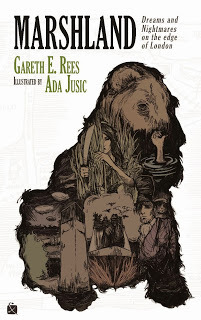 Surprise of the year! Gareth E. Rees's weird
Surprise of the year! Gareth E. Rees's weird
psychogeographical study of the Lea basin,
Marshland; Dreams and nightmares on the Edge of London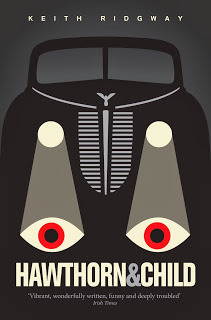 Is it a novel, or a collection of short stories?
Is it a novel, or a collection of short stories?
It's certainly strange and compelling. Keith Ridgway's Hawthorn & Child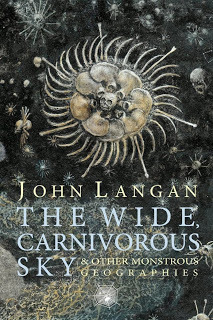 John Langan's expansive and spectacular
John Langan's expansive and spectacular
The Wide Carnivorous Sky New from Reggie Oliver; Flowers of the Sea
New from Reggie Oliver; Flowers of the Sea
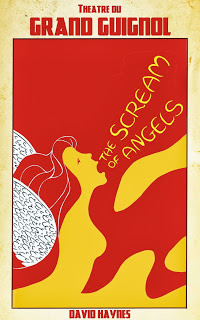 Scream of Angels; more Victorian horror from David Haynes
Scream of Angels; more Victorian horror from David Haynes
 Be drawn into Mark Fuller Dillon's world if you dare;
Be drawn into Mark Fuller Dillon's world if you dare;
the stellar In a Season of Dead WeatherKeep an eye out, I will post reviews of some of these excellent books soon.
Once again, in no particular order:
 Surely one of the anthologies of the year; S.P. Miskowski and Kate Jonez's
Surely one of the anthologies of the year; S.P. Miskowski and Kate Jonez's superb Little Visible Delight. Review soon
 Surprise of the year! Gareth E. Rees's weird
Surprise of the year! Gareth E. Rees's weird psychogeographical study of the Lea basin,
Marshland; Dreams and nightmares on the Edge of London
 Is it a novel, or a collection of short stories?
Is it a novel, or a collection of short stories? It's certainly strange and compelling. Keith Ridgway's Hawthorn & Child
 John Langan's expansive and spectacular
John Langan's expansive and spectacular The Wide Carnivorous Sky
 New from Reggie Oliver; Flowers of the Sea
New from Reggie Oliver; Flowers of the Sea
 Scream of Angels; more Victorian horror from David Haynes
Scream of Angels; more Victorian horror from David Haynes
 Be drawn into Mark Fuller Dillon's world if you dare;
Be drawn into Mark Fuller Dillon's world if you dare; the stellar In a Season of Dead WeatherKeep an eye out, I will post reviews of some of these excellent books soon.
Published on December 27, 2013 02:06
December 19, 2013
My year that was
Time to reflect briefly on 2013.
I haven't been blogging much recently... as I have actually been writing a lot, and also doing the final edits on Dying Embers. However, more about that later. In so many ways it's been a big year for me; I have had three short stories see the light of day, and my first collection of short stories has been accepted by a publisher. I have also written more consistently than at any other time of my life.
Well, back to Jan 2013. In Transit and Unit 6 had just been published in Darker Times, my very first success with fiction (I had for some years written the occasional non-fiction feature for magazines). This encouraged me so much. I had never before thought that anyone else would want to read any fiction I had written, yet I got a lot of positive feedback. At the end of 2012, I had also started my foray into social media, and I was concentrating on building that up a bit too.
I must add here that I have had some good support from some great writers through the year; particularly James Everington, PJ Hodge, KJ Blackwood, Maria Savva, Dionne Lister and Jess Coleman, among others. A big thanks to everyone. Exciting times for me, then, but early on I really was not convinced I would ever be able to put together enough stories for a whole collection. All of my early tales were autobiographical (I did work in Unit 6, my grandparents did live in a big old terrace, I do run around the coast at Currarong... I could go on, but you might have to buy the book when it's out!). The problem was, I had no idea whether I would be able to write anything that was not directly from my own experience. Come to think of it, I still don't, but that's another story.
As the writing lark was all so new to me, I had to find out how exactly I could fit it into my life. I look after our two children while my wife works, so it's a matter of giving myself the opportunity to write. Generally when I have dropped the youngsters at school, I make my way to the local shopping centre with my Rolser (the Ferrari of shopping trolleys), and on the way I stop at one of two cafés. I have found that if I try to work at home, though I have a perfectly good office, I am distracted by the washing, tidying up, changing the beds... you name it. So I'm much better at spending a couple of hours typing madly in Café 169 or Café Heliz, where they know my writerly ways and put up with me. Then it's to the shops – I always shop daily, and do my best to avoid the supermarkets – and home between 12 and 1. Then, most days, it's time for a run, and often I become inspired during said activity; so it's home, late lunch while listening to the Archers podcast, and off to get the children. Take them to a playground, or swimming etc, and out comes my A6 Moleskin and I jot down the ideas that visited me during my run while they are otherwise occupied.
 My Rolser, the Ferrari of shopping
My Rolser, the Ferrari of shopping
trolleys, in Café Heliz My favourite spot in Café 169So, having sorted my routine (apart from school holidays, when everything goes pear shaped!) the stories came to me well enough during the year, and by November I had the 10 I was aiming for. It was during the process of editing and formatting for the self-publishing process that I heard about Satalyte Publishing, based in Melbourne. Almost as an afterthought, I pasted everything into a Word document, and sent it off. I was delighted to hear back from the great Stephen Ormsby almost straight away that he may be interested in publishing it for me. Great news! Soon contracts were signed, and terms agreed. Right now, I am working on final edits with Stephen, who I must say has provided some fascinating insights and subtle alterations to some of my tales which have improved them no end. So far, I couldn't recommend both Satalyte and the process too highly.
My favourite spot in Café 169So, having sorted my routine (apart from school holidays, when everything goes pear shaped!) the stories came to me well enough during the year, and by November I had the 10 I was aiming for. It was during the process of editing and formatting for the self-publishing process that I heard about Satalyte Publishing, based in Melbourne. Almost as an afterthought, I pasted everything into a Word document, and sent it off. I was delighted to hear back from the great Stephen Ormsby almost straight away that he may be interested in publishing it for me. Great news! Soon contracts were signed, and terms agreed. Right now, I am working on final edits with Stephen, who I must say has provided some fascinating insights and subtle alterations to some of my tales which have improved them no end. So far, I couldn't recommend both Satalyte and the process too highly.
By the way, I have spent some time setting up a website for my writing, over at martincosby.com, so have a look at that when you have a moment.
To top off the year perfectly; I hope he doesn't mind me announcing it, but James Everington, author of two great collections of weird fiction (The Other Room, and Falling Over) and a stunning novella (The Shelter) has agreed to write the foreword for my own collection, Dying Embers . Cheers James!
I haven't been blogging much recently... as I have actually been writing a lot, and also doing the final edits on Dying Embers. However, more about that later. In so many ways it's been a big year for me; I have had three short stories see the light of day, and my first collection of short stories has been accepted by a publisher. I have also written more consistently than at any other time of my life.
Well, back to Jan 2013. In Transit and Unit 6 had just been published in Darker Times, my very first success with fiction (I had for some years written the occasional non-fiction feature for magazines). This encouraged me so much. I had never before thought that anyone else would want to read any fiction I had written, yet I got a lot of positive feedback. At the end of 2012, I had also started my foray into social media, and I was concentrating on building that up a bit too.
I must add here that I have had some good support from some great writers through the year; particularly James Everington, PJ Hodge, KJ Blackwood, Maria Savva, Dionne Lister and Jess Coleman, among others. A big thanks to everyone. Exciting times for me, then, but early on I really was not convinced I would ever be able to put together enough stories for a whole collection. All of my early tales were autobiographical (I did work in Unit 6, my grandparents did live in a big old terrace, I do run around the coast at Currarong... I could go on, but you might have to buy the book when it's out!). The problem was, I had no idea whether I would be able to write anything that was not directly from my own experience. Come to think of it, I still don't, but that's another story.
As the writing lark was all so new to me, I had to find out how exactly I could fit it into my life. I look after our two children while my wife works, so it's a matter of giving myself the opportunity to write. Generally when I have dropped the youngsters at school, I make my way to the local shopping centre with my Rolser (the Ferrari of shopping trolleys), and on the way I stop at one of two cafés. I have found that if I try to work at home, though I have a perfectly good office, I am distracted by the washing, tidying up, changing the beds... you name it. So I'm much better at spending a couple of hours typing madly in Café 169 or Café Heliz, where they know my writerly ways and put up with me. Then it's to the shops – I always shop daily, and do my best to avoid the supermarkets – and home between 12 and 1. Then, most days, it's time for a run, and often I become inspired during said activity; so it's home, late lunch while listening to the Archers podcast, and off to get the children. Take them to a playground, or swimming etc, and out comes my A6 Moleskin and I jot down the ideas that visited me during my run while they are otherwise occupied.
 My Rolser, the Ferrari of shopping
My Rolser, the Ferrari of shopping trolleys, in Café Heliz
 My favourite spot in Café 169So, having sorted my routine (apart from school holidays, when everything goes pear shaped!) the stories came to me well enough during the year, and by November I had the 10 I was aiming for. It was during the process of editing and formatting for the self-publishing process that I heard about Satalyte Publishing, based in Melbourne. Almost as an afterthought, I pasted everything into a Word document, and sent it off. I was delighted to hear back from the great Stephen Ormsby almost straight away that he may be interested in publishing it for me. Great news! Soon contracts were signed, and terms agreed. Right now, I am working on final edits with Stephen, who I must say has provided some fascinating insights and subtle alterations to some of my tales which have improved them no end. So far, I couldn't recommend both Satalyte and the process too highly.
My favourite spot in Café 169So, having sorted my routine (apart from school holidays, when everything goes pear shaped!) the stories came to me well enough during the year, and by November I had the 10 I was aiming for. It was during the process of editing and formatting for the self-publishing process that I heard about Satalyte Publishing, based in Melbourne. Almost as an afterthought, I pasted everything into a Word document, and sent it off. I was delighted to hear back from the great Stephen Ormsby almost straight away that he may be interested in publishing it for me. Great news! Soon contracts were signed, and terms agreed. Right now, I am working on final edits with Stephen, who I must say has provided some fascinating insights and subtle alterations to some of my tales which have improved them no end. So far, I couldn't recommend both Satalyte and the process too highly.By the way, I have spent some time setting up a website for my writing, over at martincosby.com, so have a look at that when you have a moment.
To top off the year perfectly; I hope he doesn't mind me announcing it, but James Everington, author of two great collections of weird fiction (The Other Room, and Falling Over) and a stunning novella (The Shelter) has agreed to write the foreword for my own collection, Dying Embers . Cheers James!
Published on December 19, 2013 02:30
December 2, 2013
Books I have read in 2013
Well, it's that time of year again. I was looking back over the blog, from twelve months ago, thinking about my best reads of last year; and, if anything, 2013 has been even better!
I've certainly noticed a resurgence in short story collections, which is indeed heartening. In fact there have been so many new collections out recently that I have barely been able to keep up. I will get around to some more reviews soon, but in the meantime I thought I would share 12 of my favourite reads of the year with you. (As usual, just books that were new to me this year; not necessarily newly-published.)
In no particular order, here we go:
 The Moon Will Look Strange, the great new collection from Lynda E. Rucker.
The Moon Will Look Strange, the great new collection from Lynda E. Rucker.
 I haven't finished this one yet, but so far so strange; News From Unknown Countries, by Tim Lees.
I haven't finished this one yet, but so far so strange; News From Unknown Countries, by Tim Lees.
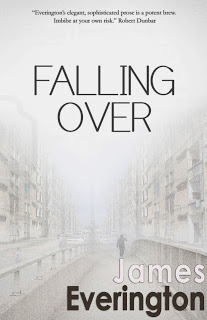 Fabulous new collection of strange stories by James Everington; Falling Over. My review here.
Fabulous new collection of strange stories by James Everington; Falling Over. My review here.
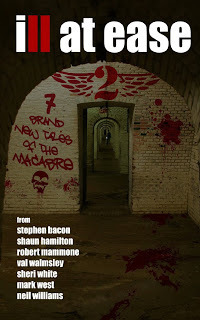 Brand new and a must-read; Ill at Ease II. Review soon.
Brand new and a must-read; Ill at Ease II. Review soon.
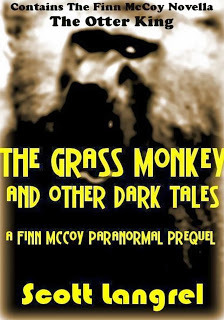 Strangeness indeed from Scott Langrel. The Grass Monkey and Other Dark Tales.
Strangeness indeed from Scott Langrel. The Grass Monkey and Other Dark Tales.
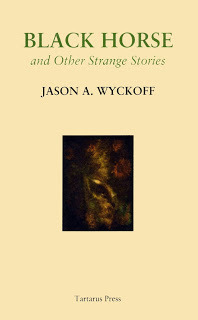 Jason A. Wyckoff's brilliant debut; Black Horse and Other Strange Stories. My review here.
Jason A. Wyckoff's brilliant debut; Black Horse and Other Strange Stories. My review here.
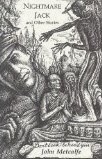 John Metcalfe's timelessly eerie collection, Nightmare Jack.
John Metcalfe's timelessly eerie collection, Nightmare Jack.
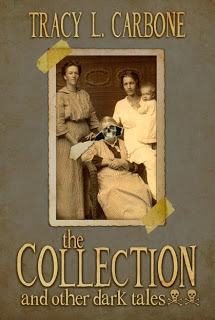 The Collection and Other Dark Tales by Tracy L. Carbone. Terribly good; review soon.
The Collection and Other Dark Tales by Tracy L. Carbone. Terribly good; review soon.
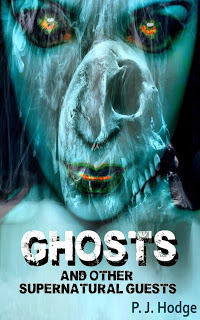 PJ Hodge's Poe-esque collection of freaky folk tales; Ghosts and Other Supernatural Guests. My review here.
PJ Hodge's Poe-esque collection of freaky folk tales; Ghosts and Other Supernatural Guests. My review here.
 Classic ghost stories from Eleanor Scott; Randall's Round.
Classic ghost stories from Eleanor Scott; Randall's Round.
 Great new name on the scene; Lauren James's The Side Effects of the Medication.
Great new name on the scene; Lauren James's The Side Effects of the Medication.
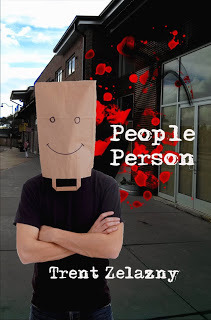 Satisfyingly strange, in fact my novella of the year; Trent Zelazny's People Person.
Satisfyingly strange, in fact my novella of the year; Trent Zelazny's People Person.
Well, that's a great mixture of new collections and classics. I've read many more great books this year, so look out for subsequent lists. In the meantime, I'll try to get some more reviews done. Oh, and I nearly forgot; I also have to do the edits for Dying Embers , my own collection coming out next year from Satalyte Publishing. Wish me luck!
I've certainly noticed a resurgence in short story collections, which is indeed heartening. In fact there have been so many new collections out recently that I have barely been able to keep up. I will get around to some more reviews soon, but in the meantime I thought I would share 12 of my favourite reads of the year with you. (As usual, just books that were new to me this year; not necessarily newly-published.)
In no particular order, here we go:
 The Moon Will Look Strange, the great new collection from Lynda E. Rucker.
The Moon Will Look Strange, the great new collection from Lynda E. Rucker.
 I haven't finished this one yet, but so far so strange; News From Unknown Countries, by Tim Lees.
I haven't finished this one yet, but so far so strange; News From Unknown Countries, by Tim Lees.
 Fabulous new collection of strange stories by James Everington; Falling Over. My review here.
Fabulous new collection of strange stories by James Everington; Falling Over. My review here.
 Brand new and a must-read; Ill at Ease II. Review soon.
Brand new and a must-read; Ill at Ease II. Review soon.
 Strangeness indeed from Scott Langrel. The Grass Monkey and Other Dark Tales.
Strangeness indeed from Scott Langrel. The Grass Monkey and Other Dark Tales. Jason A. Wyckoff's brilliant debut; Black Horse and Other Strange Stories. My review here.
Jason A. Wyckoff's brilliant debut; Black Horse and Other Strange Stories. My review here. John Metcalfe's timelessly eerie collection, Nightmare Jack.
John Metcalfe's timelessly eerie collection, Nightmare Jack.
 The Collection and Other Dark Tales by Tracy L. Carbone. Terribly good; review soon.
The Collection and Other Dark Tales by Tracy L. Carbone. Terribly good; review soon.  PJ Hodge's Poe-esque collection of freaky folk tales; Ghosts and Other Supernatural Guests. My review here.
PJ Hodge's Poe-esque collection of freaky folk tales; Ghosts and Other Supernatural Guests. My review here. Classic ghost stories from Eleanor Scott; Randall's Round.
Classic ghost stories from Eleanor Scott; Randall's Round.
 Great new name on the scene; Lauren James's The Side Effects of the Medication.
Great new name on the scene; Lauren James's The Side Effects of the Medication.
 Satisfyingly strange, in fact my novella of the year; Trent Zelazny's People Person.
Satisfyingly strange, in fact my novella of the year; Trent Zelazny's People Person.Well, that's a great mixture of new collections and classics. I've read many more great books this year, so look out for subsequent lists. In the meantime, I'll try to get some more reviews done. Oh, and I nearly forgot; I also have to do the edits for Dying Embers , my own collection coming out next year from Satalyte Publishing. Wish me luck!
Published on December 02, 2013 18:38
November 12, 2013
Ghostly Meroogal; where time stands still
Recently we visited Meroogal, a house owned by the Historic Houses Trust. It is on the outskirts of the busy town of Nowra, on the southern coast of NSW; a weatherboard house, it's fairly typical of country towns, but is remarkable as it has survived for so long with so few changes. I'm not sure quite what I expected, but my first surprise was at how difficult it was to find. Set back behind trees in a quiet back street atop a gentle hill, there was no sign of it being out of the ordinary; indeed, being somehow ordinary is its main attraction.

Meroogal was first occupied in 1886, and stayed in the same family until it was bought by the Historic Houses Trust in August, 1985. At the time it was thought to be the most intact nineteenth-century house in NSW, and has been preserved as such ever since. It is only open to the public on occasion. When we were shown round, we had to wear cotton bootees over our shoes to preserve threadbare carpets; and we were the only members of the public there, which improved the experience no end. It was like entering a time capsule, making it possible to explore aspects of life in a country town through the ages. The way in which the family used the house, and how it changed over the years, is laid bare. Minor changes have been made, rooms added or partitioned, furniture moved around, but very little since the 1950s at the latest.
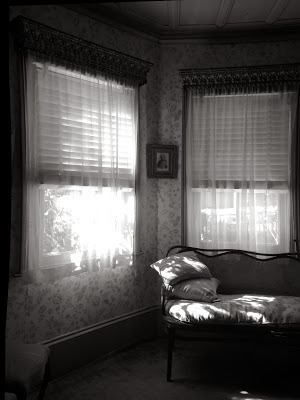 The "games room" at the front of the houseIt's also interesting that the family comprised mainly of women. Meroogal was built for Jesse Catherine Thorburn and her unmarried children. It was left to her unmarried daughters; then subsequently to their MacGregor nieces (daughters of their married sister), then finally to the MacGregor's niece, June Wallace, who sold it to the Trust in 1985. Over the years, the women maintained the house virtually without help, and many of their innovative repairs and attempts at decoration are still clearly visible. At one stage they took in lodgers, and as a result one room upstairs is still set up with a tiny kitchenette, complete with rudimentary sink, stove and larder, dating from the 1930s or '40s.
The "games room" at the front of the houseIt's also interesting that the family comprised mainly of women. Meroogal was built for Jesse Catherine Thorburn and her unmarried children. It was left to her unmarried daughters; then subsequently to their MacGregor nieces (daughters of their married sister), then finally to the MacGregor's niece, June Wallace, who sold it to the Trust in 1985. Over the years, the women maintained the house virtually without help, and many of their innovative repairs and attempts at decoration are still clearly visible. At one stage they took in lodgers, and as a result one room upstairs is still set up with a tiny kitchenette, complete with rudimentary sink, stove and larder, dating from the 1930s or '40s.
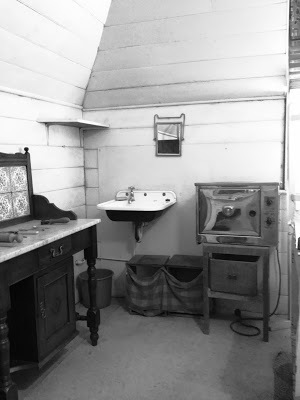 The tiny kitchenette for lodgers in the upstairs bedroom
The tiny kitchenette for lodgers in the upstairs bedroom
at the back of the houseThere is such a positive feel about the house, and its history is generally a happy one. The women who lived here over so many years were strong-willed, self-sufficient and resourceful. Various rooms of the house have been used for their various artistic endeavours, and by all accounts they entertained regularly and were popular members of the local society. However, the sense of the past is so strong that I couldn't help but think of all the ghosts which such a place might contain. In much of the house, it's as if the occupants have stepped from the room for a brief moment; playing cards are strewn, books lie open. Inexpertly applied wallpaper has never been rectified. It did make me wonder how much of their strong personalities might still remain.
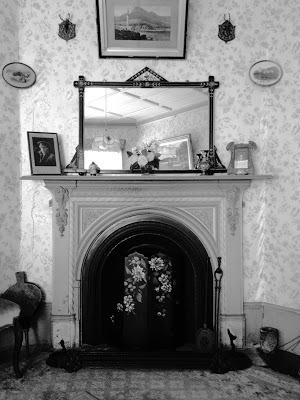
 The original water pump, which of course still worksWe left Maroogal feeling like we had traveled back in time. Across the road, looking for a spot to eat our picnic, we found a wooded area out on the headland complete with spectacular views across the Shoalhaven River. We decided on an area adjacent to a cliff which plunged down to the huge expanse of water; it has apparently been the scene of several suicides. Which, I suspect, may be a completely different story...
The original water pump, which of course still worksWe left Maroogal feeling like we had traveled back in time. Across the road, looking for a spot to eat our picnic, we found a wooded area out on the headland complete with spectacular views across the Shoalhaven River. We decided on an area adjacent to a cliff which plunged down to the huge expanse of water; it has apparently been the scene of several suicides. Which, I suspect, may be a completely different story...
 The outside of the house has not changed at all since 1886.
The outside of the house has not changed at all since 1886.

Meroogal was first occupied in 1886, and stayed in the same family until it was bought by the Historic Houses Trust in August, 1985. At the time it was thought to be the most intact nineteenth-century house in NSW, and has been preserved as such ever since. It is only open to the public on occasion. When we were shown round, we had to wear cotton bootees over our shoes to preserve threadbare carpets; and we were the only members of the public there, which improved the experience no end. It was like entering a time capsule, making it possible to explore aspects of life in a country town through the ages. The way in which the family used the house, and how it changed over the years, is laid bare. Minor changes have been made, rooms added or partitioned, furniture moved around, but very little since the 1950s at the latest.
 The "games room" at the front of the houseIt's also interesting that the family comprised mainly of women. Meroogal was built for Jesse Catherine Thorburn and her unmarried children. It was left to her unmarried daughters; then subsequently to their MacGregor nieces (daughters of their married sister), then finally to the MacGregor's niece, June Wallace, who sold it to the Trust in 1985. Over the years, the women maintained the house virtually without help, and many of their innovative repairs and attempts at decoration are still clearly visible. At one stage they took in lodgers, and as a result one room upstairs is still set up with a tiny kitchenette, complete with rudimentary sink, stove and larder, dating from the 1930s or '40s.
The "games room" at the front of the houseIt's also interesting that the family comprised mainly of women. Meroogal was built for Jesse Catherine Thorburn and her unmarried children. It was left to her unmarried daughters; then subsequently to their MacGregor nieces (daughters of their married sister), then finally to the MacGregor's niece, June Wallace, who sold it to the Trust in 1985. Over the years, the women maintained the house virtually without help, and many of their innovative repairs and attempts at decoration are still clearly visible. At one stage they took in lodgers, and as a result one room upstairs is still set up with a tiny kitchenette, complete with rudimentary sink, stove and larder, dating from the 1930s or '40s. The tiny kitchenette for lodgers in the upstairs bedroom
The tiny kitchenette for lodgers in the upstairs bedroom at the back of the houseThere is such a positive feel about the house, and its history is generally a happy one. The women who lived here over so many years were strong-willed, self-sufficient and resourceful. Various rooms of the house have been used for their various artistic endeavours, and by all accounts they entertained regularly and were popular members of the local society. However, the sense of the past is so strong that I couldn't help but think of all the ghosts which such a place might contain. In much of the house, it's as if the occupants have stepped from the room for a brief moment; playing cards are strewn, books lie open. Inexpertly applied wallpaper has never been rectified. It did make me wonder how much of their strong personalities might still remain.

 The original water pump, which of course still worksWe left Maroogal feeling like we had traveled back in time. Across the road, looking for a spot to eat our picnic, we found a wooded area out on the headland complete with spectacular views across the Shoalhaven River. We decided on an area adjacent to a cliff which plunged down to the huge expanse of water; it has apparently been the scene of several suicides. Which, I suspect, may be a completely different story...
The original water pump, which of course still worksWe left Maroogal feeling like we had traveled back in time. Across the road, looking for a spot to eat our picnic, we found a wooded area out on the headland complete with spectacular views across the Shoalhaven River. We decided on an area adjacent to a cliff which plunged down to the huge expanse of water; it has apparently been the scene of several suicides. Which, I suspect, may be a completely different story... The outside of the house has not changed at all since 1886.
The outside of the house has not changed at all since 1886.
Published on November 12, 2013 00:58
October 30, 2013
Review: Ghosts and Other Supernatural Guests by PJ Hodge

I've long been a keen follower of the Freaky Folk Tales blog by PJ Hodge, so I was very excited when I heard that these fascinating tales would be published in book form. The first volume has duly arrived, just in time for Hallowe'en (and, perhaps even better, well in time for Christmas).
The great news is, these stories work really well in a book format; Hodge writes in the style of MR James, or, more recently, David G. Rowlands, perfect to enjoy while relaxing in front of a roaring fire as darkness falls outside.
There are twelve tales here, and all are imbued with a unique authenticity which lifts them above the usual; Hodge has done the hard yards of research, and it shows. The reader is treated to a supernatural tour of traditional England, in which local myth and legend is intertwined with well-crafted drama, creating the kind of book it's difficult not to read in one sitting.
The scene is set by The Ghost Bureau, welcoming us into the world of Victorian drawing rooms, spiritualism and seances. The sceptical protagonist accepts a position with the eponymous organisation, and is forced to reconsider her own lack of belief in the spiritual world when she sees her own murderer – or does she? A gripping start, followed by A Tip of the Hat, which is something of a comic interlude, and deftly done.
In The Viaduct, an evocative tale of childhood misadventure and is recounted. During their summer holidays, Peter, Tom and James have explored further from home than ever before, encountering the viaduct that they had previously only seen from afar. There they hear an inexplicable dialogue, and become fascinated by the place, returning a few days later to find out more. Unfortunately, warnings are not heeded, and it all ends in tragedy. The wistful companionship of youth in a long-lost English landscape is picture perfect, and the reader is led by the hand into Return to Tyneham. To me this was one of the most powerful tales here, tackling the thorny issue of evacuation during the war. A whole village is relocated, but one family reject the new accommodation and choose to be "taken in" by their aunt Alice, who lives nearby on a farm. Heartbroken, they arrive, expecting to be welcomed but finding a deserted shell of a house. Alice's ghostly presence is felt, as is the rearrangement of space and time; revealing the need in everyone to have somewhere to call home.
The Flames of Stalbridge Manor introduces us to a terrifying phantom. Staying at an unfamiliar country manor, a family is subjected to horrific visions of a figure engulfed in flames. Distressed, they leave, only to find out rather more than they are comfortable with; someone was burnt to death there long ago, and ever since, the house has been boarded up. This leads to a deliciously ambiguous ending, which leaves the reader thinking. By contrast, A Tale of Chirbury is a more ancient tale of superstition and suspicion. A village is told by a witch not to enter the grounds of St Michael's church on All Hallow's Eve, but certain of the congregation choose to ignore this warning; and they hear the names of those who will be shortly buried therein. This roll-call of terror comes to haunt the whole village and affect later generations. Is it possible to step out of the shadow?
The collection is concluded by Alice's Ghost, the touching tale of a nobleman's love for Lucinda, the young daughter of his housekeeper. His proposal of marriage to her is accepted; however, the ghost of his dead wife Alice returns to warn him against re-marrying, and eventually he wilts under her intense supernatural pressure. In despair, he throws himself from a cliff; but is it the end, or merely the beginning? And is he in fact rescued, and if so, by whom?
I can see this book being the first in a long and successful series, and PJ Hodge becoming even more of an authority in local myths and legends. I'm eagerly anticipating the next installment already!
Published on October 30, 2013 20:27



